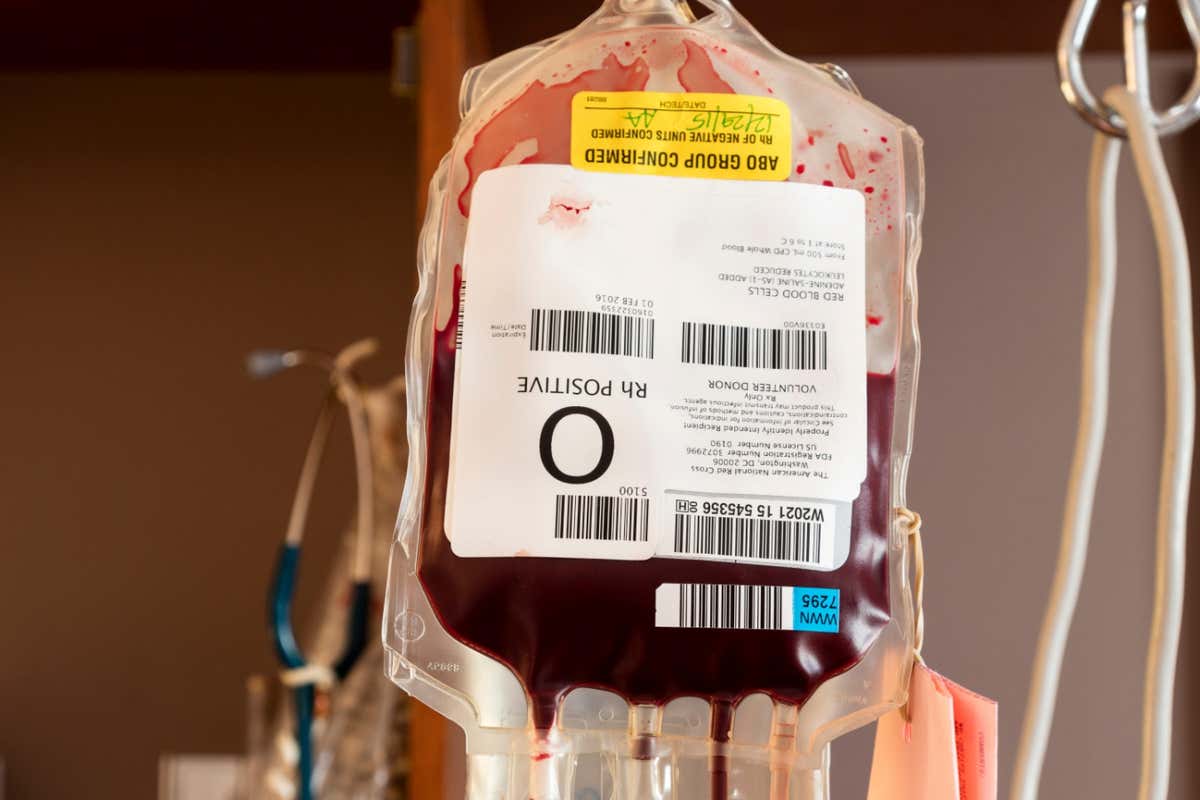Blood
Young mouse blood extends lives of older ones while rejuvenating them
The blood of a young individual may contain cells, proteins or other components that have rejuvenating properties
Alamy Stock Photo
Surgically attaching old mice to young mice for three months turns back the biological age of the older individuals and extends their lifespan after they are detached. The finding adds to a large body of research pointing to the restorative effects of young blood.
Several studies have found that sewing old and young mice together so their blood flows into each other’s bodies – a procedure called parabiosis – has rejuvenating effects on the older individual’s brain, liver and muscles. However, whether this means they end up living longer, even after separation from the young mice, has been unclear.
To find out, a team co-led by James White at Duke University in North Carolina and Vadim Gladyshev at Harvard University surgically connected old mice (aged 20 months) to either young mice (aged 3 months) or other old mice for a period of three months. The researchers then detached them and measured how long they lived. “We wanted to know, do the anti-ageing effects just go away after you take the mice apart?” says White.
Advertisement
The old mice that had been joined to the young mice ended up living six weeks longer on average than those that had been joined to other old mice, a lifespan extension of about 5 per cent. “If you could improve human lifespan by 5 per cent, that could mean an extra four or five years,” says White. The researchers did not compare these mice’s lifespans against those that were not surgically attached to any other animal in case the procedure itself affected their longevity, which could blur the results.
However, this effect is smaller than that achieved by calorie restriction, which can make mice live up to 27 per cent longer.
The researchers also used epigenetic clocks, which analyse patterns of markers on DNA called methyl groups that correlate with age, to find out whether the old mice that were connected to young mice became biologically “younger”. Indeed, straight after detachment and even two months later, they appeared up to 30 per cent younger than those that had been joined to old mice.
What’s more, the old mice that were previously paired with young mice displayed altered gene expressions, including higher expression of certain metabolism genes and reduced expression of inflammation genes, which was similarly observed in mice that underwent calorie restriction.
The reason for these anti-ageing effects may be that the blood of young mice contains cells, proteins or other components that have rejuvenating properties when they flow into old mice, says White. Another possibility is that the blood of the old mice gets filtered or diluted through the healthier kidneys and livers of the young mice, helping to remove harmful components associated with ageing, he says.
Some preliminary studies have investigated whether blood transfusions from young people reverse ageing in older people. For example, Ambrosia, a US start-up, gave plasma from donors aged 16 to 25 to people aged 35 or older. They then compared age-related biomarkers in the older people from before and after the infusion. However, the results were never made public and the company folded. Another small trial gave weekly injections of young plasma to people with Alzheimer’s disease and found minimal benefits. And earlier this month, tech entrepreneur Bryan Johnson, aged 45, reported no benefits from receiving plasma transfusions from his 17-year-old son.
Discontinuing therapy: completed 6, 1L young plasma exchanges. 1x/mo (1 w/ my son). Evaluated biomarkers from biofluids, devices and imaging, no benefits detected.
Young plasma exchange may be beneficial for biologically older populations or certain conditions. Does not in my…
— Zero (@bryan_johnson) July 5, 2023
These disappointing results may have occurred because plasma only contains the liquid portion of blood, without any cells, and the frequency of treatment may not have been optimal, says White. “The reason the parabiosis effect is so strong is probably because there’s constant exposure to all components of young blood.”
David Irving at Australian Red Cross Lifeblood, which collects and distributes donated blood products across the country, believes that using blood to try to extend lifespan is unethical because it “diverts a precious and often life-saving resource away from cancer patients and others in need”. “A better focus would be on calorie restriction, for which there is much better evidence,” he says.
Several groups are now trying to pinpoint the precise rejuvenating components in young blood so that they could potentially be made in a lab, without the need for blood donors, says White. Even if these efforts don’t succeed, the latest study adds to growing evidence that the negative health effects of ageing aren’t as inevitable as we once thought, he says. “It does show that ageing can be manipulated and it’s not simply a fact of time.”
Topics:

